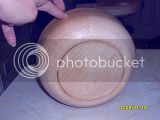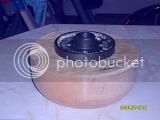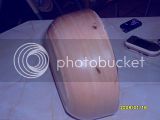Hi all,
I have a couple of 8 inch x 4 in maple blocks for bowls.
I started on one last night, and i took me and hour and a half to get the outer in a profile i liked.
I found it very difficult to get the squares edges rounded off for a start, the wood seems to shatter off in chunks, rather than sheer neatly for me, then my gauge seemed to only take off dust rather than shavings when profiling the bowl ( on the side portions was very hard ) profiling the base are was much easier !
Is it my technique ? the wood ?
I sanded the outer and base and still have rough bits on the end grain areas of the sides, started with a 40 grit, and finished on my finest - a 200 about 15 minutes and still rough areas !
Im fairly happy with what i have - although would like to know why it was so tough compared to the little bowl i did last week ?
Im assuming its my technique, although the wood seems so dense !
I'll try to put up a pic of where i am so far.



Thanks for reading my rant !
Loz
I have a couple of 8 inch x 4 in maple blocks for bowls.
I started on one last night, and i took me and hour and a half to get the outer in a profile i liked.
I found it very difficult to get the squares edges rounded off for a start, the wood seems to shatter off in chunks, rather than sheer neatly for me, then my gauge seemed to only take off dust rather than shavings when profiling the bowl ( on the side portions was very hard ) profiling the base are was much easier !
Is it my technique ? the wood ?
I sanded the outer and base and still have rough bits on the end grain areas of the sides, started with a 40 grit, and finished on my finest - a 200 about 15 minutes and still rough areas !
Im fairly happy with what i have - although would like to know why it was so tough compared to the little bowl i did last week ?
Im assuming its my technique, although the wood seems so dense !
I'll try to put up a pic of where i am so far.



Thanks for reading my rant !
Loz




